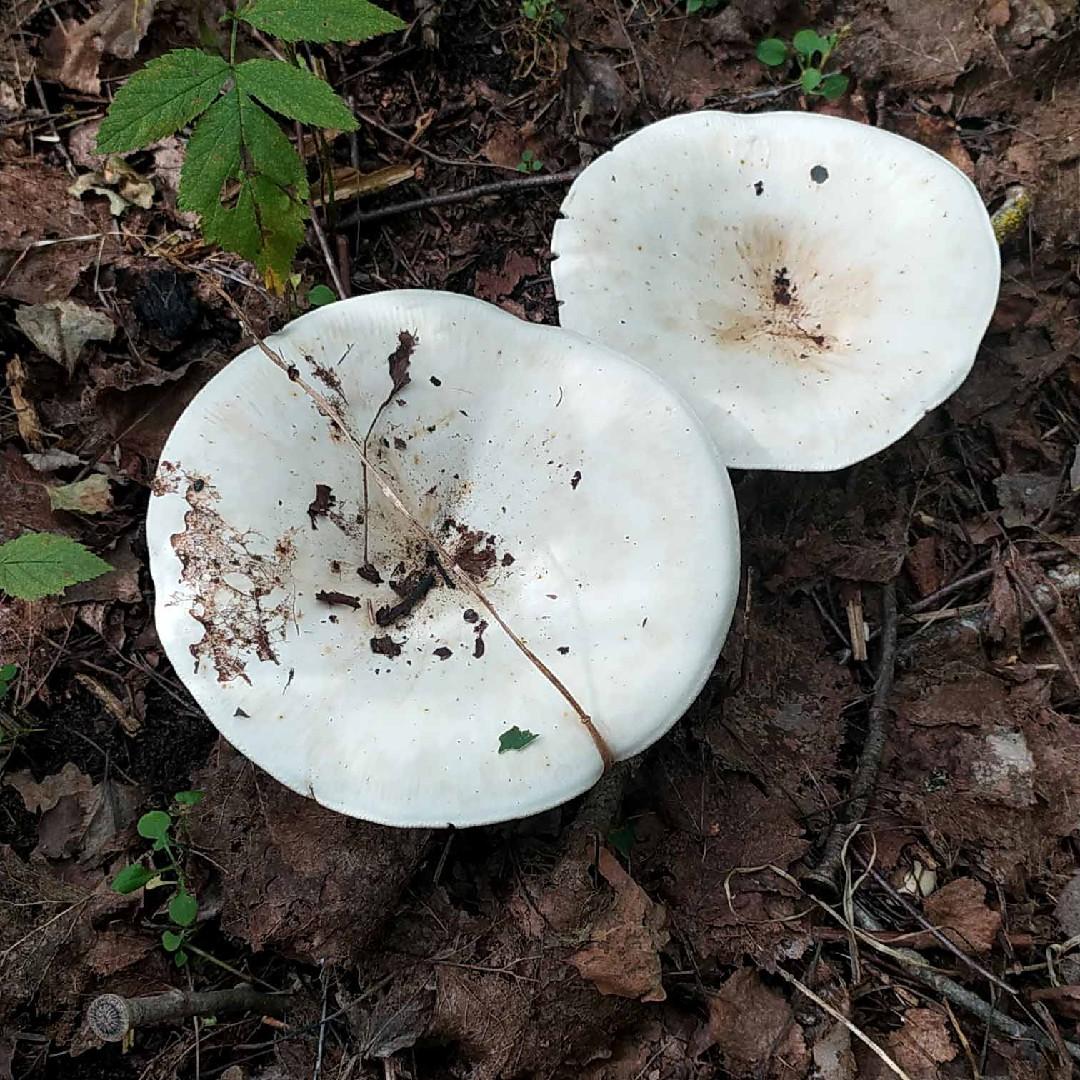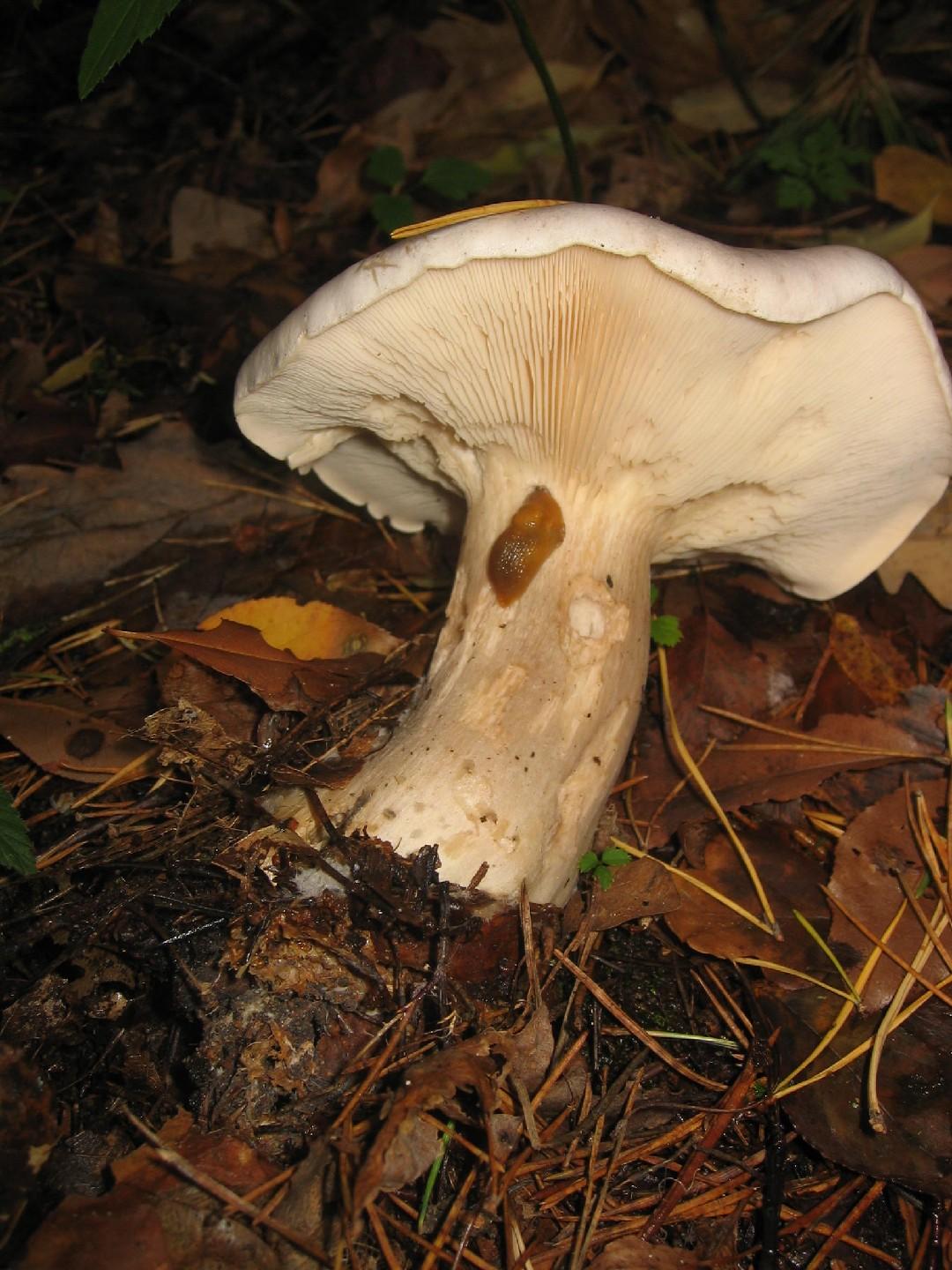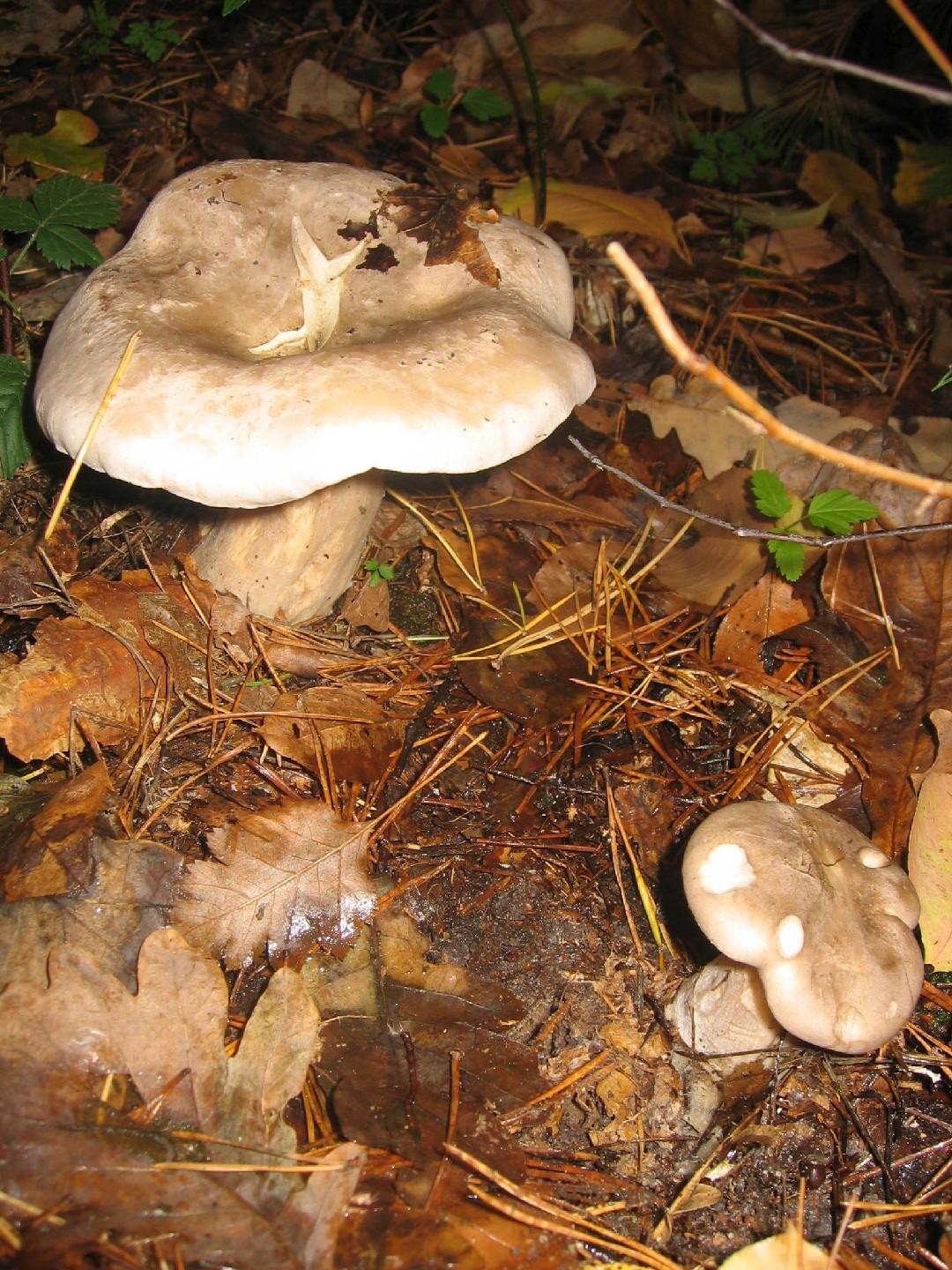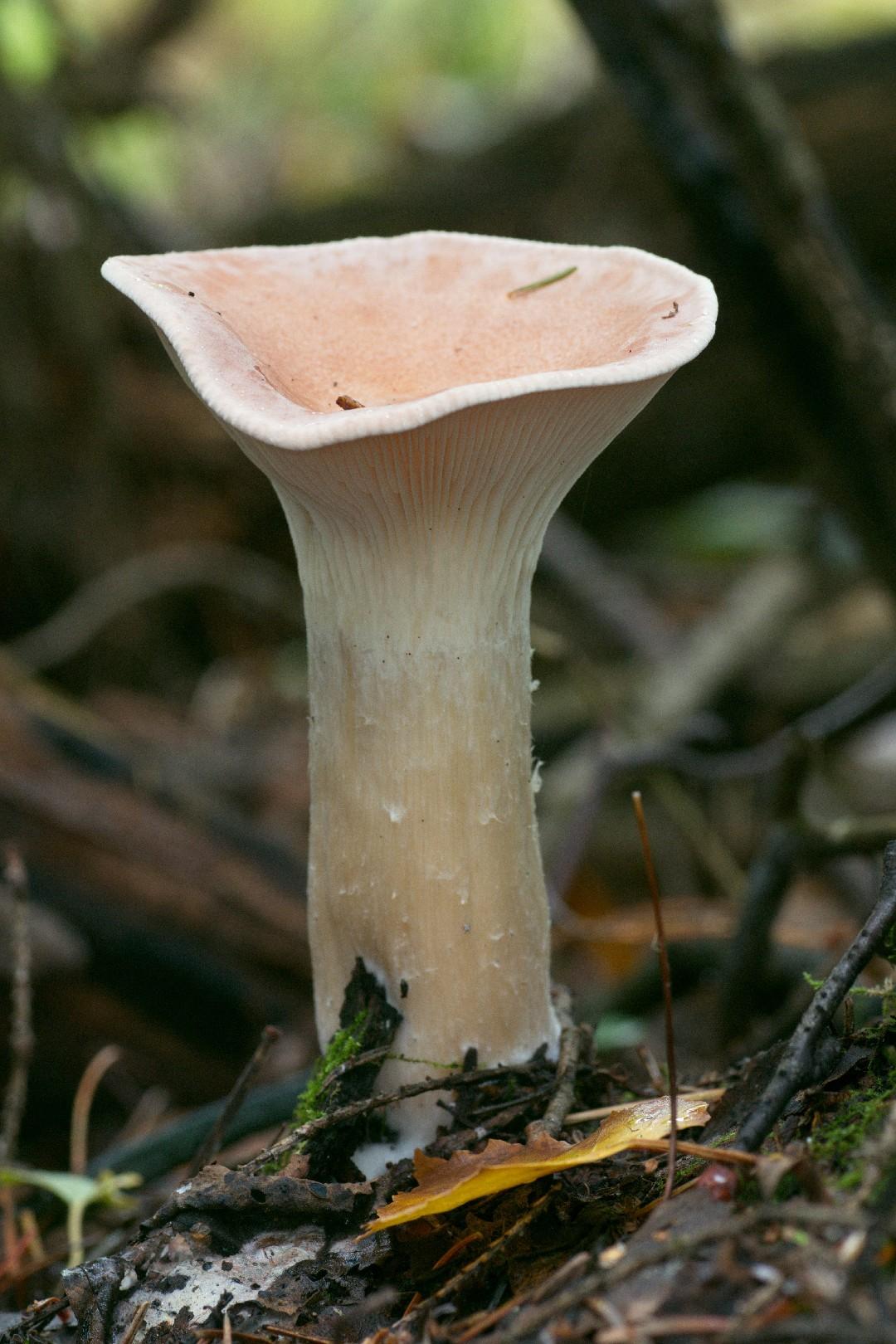



Giant leucopax
Leucopaxillus giganteus
A species of Leucopaxillus. Also known as Giant clitocybe.
A key characteristic for identifying the giant leucopax is its substantial cap, capable of reaching a diameter of 50 cm. This mushroom frequently appears in charming fairy ring formations, creating circles within fields and meadows, which are its preferred environments.
Attributes of Giant leucopax
Cap Diameter
8 - 45 cm
Height
5 - 15 cm
Cap
Cap 8 - 45 cm across; convex to funnel-shaped; ivory-white, yellow-brown; smooth; marign inrolled
Cap Shape
Convex, Flat, Depressed
Cap Surfaces
Velvety, Fibrillose-scaly
Gills
Decurrent; crowded; whitish or buff, tan
Gill Attachment
Decurrent
Stem
Stem 4 - 10 cm long, 6 cm thick; whitish; smooth
Stem Shapes
Cylindrical
Stem Surfaces
Smooth to slightly fibrous
Flesh
Whitish
Ring
Ringless
Spore Print Color
White
Odor
Mild, faintly pleasant, non-distinctive.
Body Color
BrownWhite
Flesh Bruises
The flesh or milk does not discolor when bruised or cut.
Growth Form
Solitary, Scattered, Gregarious
Nutrient Gathering
Saprophytic
Substrate
On soil
You can find Giant leucopax by these plants
Spruces, Pines, Oaks
Occurence Habitats
Deciduous Woodland, Meadows
Species Status
Common
Endangered Species
No
Scientific Classification of Giant leucopax
Phylum
Club fungi
Class
Mushroom-forming fungi
Order
Gilled fungi
Family
Pale-spore mushrooms
Genus
Leucopaxillus
Toxicity and Edibility of Giant leucopax
Is Giant leucopax Toxic?
Toxicity information is not available for this mushroom. Always consult with an expert before consuming any wild mushrooms.
Is Giant leucopax Toxic to Dogs?
Giant leucopax can be dangerous to dogs. If your pet has consumed this mushroom, seek immediate veterinary attention. Symptoms may vary, but early intervention is crucial for the best outcome.
